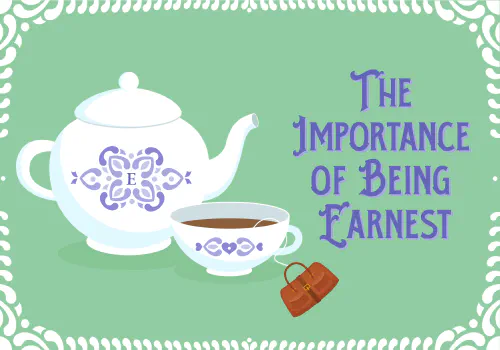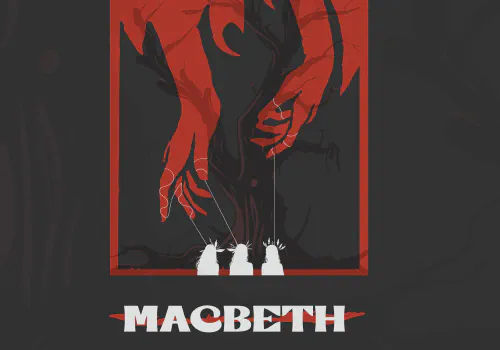By Michael Flachmann
Embedded deep within the well-known plot of Hamlet are a number of highly resonant themes and images relating to death and dying which were undoubtedly more accessible to Shakespeare’s contemporaries than they are to audiences of today. If the exciting narrative story of murder, revenge, ghosts, pirate ships, duels, romance, and incest has fascinated viewers since its first performances in the early 1600s, the play’s symbolic layers offer even more intrigue, inviting generation after generation of theatregoers to search for meaningful parallels between their own mortality and this richly allusive script.
Chief among these important themes is the ars moriendi, or “the art of dying well,” which finds its echoes in Hamlet’s preoccupation with dying, his famous contemplation of Yorick’s skull, his meditations on suicide, and the play’s incessant emphasis on death–beginning with Old Hamlet’s murder and culminating with the spectacular final scene in which the stage is littered with bodies. Composed and first acted during the plague years of 1599 1606, the script was strongly influenced by fear of “the sweating sickness,” which raged through London and its environs killing people abruptly and indiscriminately. In 1603, in fact, the year of Elizabeth’s death and the accession of James to the throne, over 40,000 people in the city succumbed to the disease.
Not surprisingly, Shakespeare’s audience was constantly searching for emotional solace during this time of increased vulnerability to the plague, which Hamlet ironically provided through its intense theatrical preoccupation with death and dying. According to popular ars moriendi tradition, people who wished to “die well” could prepare themselves for the grave through a variety of contemplative exercises which forced them to stare death in the face in much the same way that Hamlet broods over the skull of his dead jester.
Fortified by coming to terms with their own mortality, they could therefore confront death with dignity and spiritual comfort. This same theme surfaces in such other Shakespearean plays as The Tempest, in which Prospero retires to Milan where “every third thought” will be of his grave (5.1.315), and Julius Caesar, where Brutus stoically receives news of his wife’s suicide by explaining, “With meditating that she must die once, / I have the patience to endure it now” (4.3.190 91).
Closely connected to this ars moriendi tradition is the presence of the gravediggers, whose occupation of uncovering dead bodies parallels the play’s larger symbolic fixation with uncovering the truth, unearthing cultural memories, and revealing unresolved Oedipal traumas in the royal family of Denmark. Set within its comic context, the gravediggers’ scene mirrors the play’s more serious preoccupation with “digging up” the truth on a variety of crucial topics: Hamlet’s relationship with his father and mother, his distaste for Uncle Claudius, his love for Ophelia, his desire to become king, and his morbid fixation with death. Just as the gravediggers go about their grim business of unearthing long-dead bodies so fresh ones could be interred, so too does Shakespeare’s play systematically uncover the ambition, pride, lust, jealousy, and other attendant sins that have been buried for years within layers of courtly intrigue and deceit.
Another seminal death image, which brings about the first and most important murder in the play, is the poisoning of Hamlet’s father as he lies sleeping in his orchard. Reverberating throughout the script, the poison poured into Old Hamlet’s ear reappears in the players’ reenactment of the crime, in the poisoned sword and wine at the conclusion, and in all the metaphorical poison poured into ears throughout the play in the form of gossip, suggestions of revenge, slander, and evil thoughts that visit sickness and disease upon the entire court of Denmark. In selecting this particular method of killing the king, Shakespeare was once again exploiting contemporary Renaissance scientific knowledge–in this case, Italian physician Bartolomeo Eustachi’s discovery in approximately 1570 that a hollow structure of bone and cartilage extending from the middle ear to the rear of the throat, now called the Eustacian tube, could carry fluids from one location in the body to the other. Like the author of an early-day Friday the Thirteenth, Shakespeare has capitalized upon this novel method of killing the king, which reminds us of all the other poisonings in the play, both literal and symbolic.
Hamlet’s grief over his father’s gruesome death and his eventual meeting with Old Hamlet’s ghost comprises only one of four important father-son relationships in the play–all of which relate to death and dying in some respect. The others include Polonius and Laertes, Old Fortinbras and Young Fortinbras, and Uncle Claudius as surrogate parent to the young Hamlet while his absentee father was away from home smiting “the sledded Polacks on the ice” (1.1.63). Perhaps some of this emphasis upon fathers and sons is indebted to the fact that Shakespeare’s own son, Hamnet, died in 1596 at the age of eleven— approximately four years before Shakespeare wrote this play. Though the names of Hamnet and Judith, Shakespeare’s twins, seem to have been fashioned after those of his neighbors, Hamnet and Judith Sadler, and although the title of the play certainly owes some debt to the principal character Amlethus in the source material, Saxo Grammaticus’ Historia Danica, the parallel between the name of Shakespeare’s hero and that of his own recently deceased son is too tempting to ignore. One possible hypothesis is that Shakespeare, while mourning his son’s death, wrote a play that helped expiate his grief through an exploration of the relationships between four different sets of fathers and sons. Adding to the intrigue is the persistent rumor that Shakespeare the actor may have played the part of the Ghost in early productions of the play, which might explain why this morbid character has such an expansive dramatic role.
One final theme which helps us understand the many references to death and dying in Hamlet is the script’s emphasis upon the art of acting. Viewed within this metatheatrical context, Shakespeare’s play offers an intriguing range of “dramatic” life-or-death situations. Although the play-within-the-play is the most blatant of these devices, Shakespeare encourages us to interpret a number of other situations in his script in the same morbid fashion: Hamlet, for example, feigns madness in his attempt to learn the truth about his father’s murder; Claudius pretends to be innocent of the crime in order to save his life; Polonius falsely impersonates a devoted father and public servant and ends up being killed for his duplicity; and Rosencrantz and Guildenstern counterfeit as sincere friends, which leads to their bloody executions. One result of such an emphasis upon the artifice of the play is that we as spectators are invited to consider the extent to which our own lives are self-consciously theatrical. What is the crucial difference, Shakespeare seems to be asking, between the stage world and the real world? Between illusion and reality? If “all the world’s a stage,” as the well-known theatrum mundi commonplace suggests, how much of our own behavior, like Hamlet’s, is spent dissembling the truth in order to discover the truth? And how often do we become “actors” to preserve our lives?
All these central themes relating to death and dying are woven through the fabric of Shakespeare’s play like a profusion of multicolored threads in a beautiful Renaissance tapestry. Which of these images will stand out most vividly in director Howard Jensen’s 1997 production of the script? Which will allow us to see with clarity “the skull beneath the skin” of our own mortality. As Hamlet might say, “the play’s the thing” which will help us, no matter what century we inhabit, in learning how to die well.









